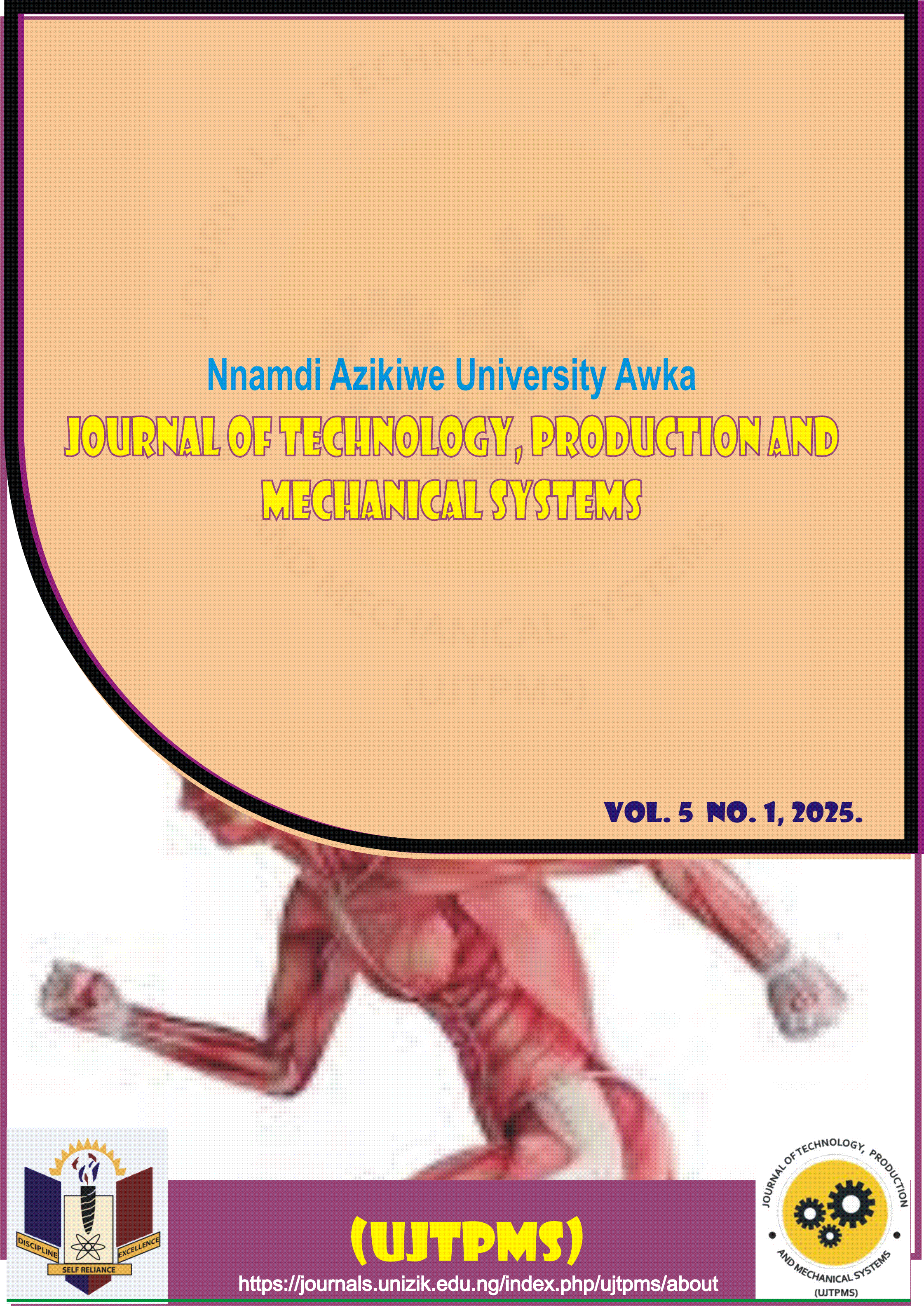Evaluation of Carbonized Hamburger Seed Shells for Methylene Blue Dye Removal: Adsorption Efficiency and Dose-Response Analysis
Keywords:
Adsorption efficiency, Methylene blue dye, Dose-response analysis, pH optimization, KOH activation, Pseudo-second-order model, Wastewater treatmentAbstract
This study evaluates the adsorption efficiency of carbonized and potassium hydroxide (KOH), activated hamburger seed shells (CPAHS) for methylene blue dye removal from aqueous solutions. The adsorbent was characterized for surface area, fixed carbon content, ash content, volatile matter, and functional groups to determine its suitability for adsorption applications. The data employed in this study was primary data obtained from experimental methods, which involved gathering, preparing, and analysing chemicals and raw materials in a laboratory. To evaluate the impact of pH, adsorbent dosage, initial dye concentration, and contact time on removal efficiency, batch adsorption studies were carried out. Fourier Transform Infrared Spectroscopy (FTIR) and Scanning Electron Microscopy (SEM) were employed to analyze the functional groups and surface morphology of CPAHS. Results indicated that CPAHS exhibited a high surface area (400.9–548.6 m²/g) and significant adsorption capacity, with the optimal pH for dye removal identified between 6 and 8. The adsorption process was analyzed using a four-parameter log-logistic function, with dose-response modelling revealing an Effective Dose (ED)₅₀ value indicative of efficient adsorption at moderate CPAHS concentrations. The adsorption kinetics followed the pseudo-second-order model, suggesting a chemisorption-dominated mechanism. Furthermore, a first-order decay model demonstrated that dye concentration reduction was most rapid at near-neutral pH levels. These findings highlight the potential of CPAHS as a cost-effective and environmentally sustainable adsorbent for dye-contaminated wastewater treatment. The study underscores the value of utilizing agro-waste materials for pollutant removal, contributing to both waste management and water purification efforts
Downloads
Published
Issue
Section
License
Copyright (c) 2025 Authors

This work is licensed under a Creative Commons Attribution-NonCommercial 4.0 International License.






